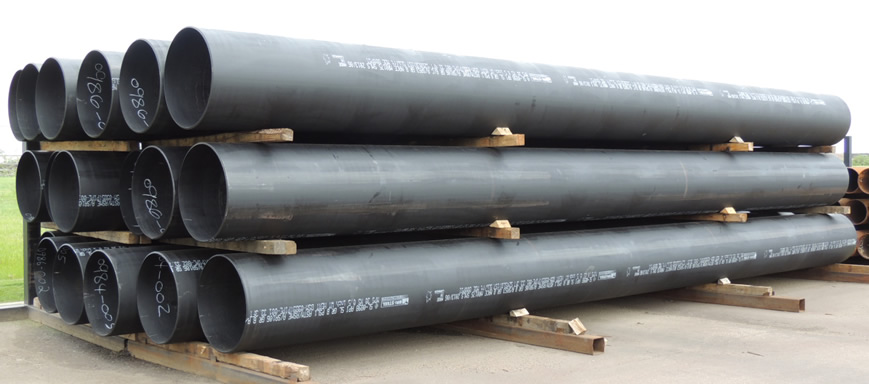
NACE MR0103 / ISO 17495 Steel Pipe
ASTM Scope:
Product Knowledge: There is a clear boundary between the application of these two Material Requirement (MR) specifications: the fence of the refinery. Both of these MR specs have the same end goal: to reduce the occurrence of cracking from sulphide stress corrosion cracking. This is generally done by reducing the amount of stress applied to the material (including residual stresses) or by only using alloys that are inherently resistant to stress corrosion cracking.
In the case of stress corrosion cracking (SSC), H2S near the surface of the steel breaks down during the corrosion reaction into iron sulphides (FeS) and atomic hydrogen (H). This little hydrogen atom is so small that it can easily navigate into the iron crystals in the steel. When it finds a voids, welding porosity, slag inclusion, inclusions from dirty steel-making, etc. the hydrogen atom will prefer to stay there (since there is a little more room). When another hydrogen atom comes along, they prefer to hang out together and form hydrogen gas (H2). With enough exposure to H2S and more and more hydrogen atoms entering the steel, the hydrogen gas pressure increases in the voids in the steel until the steel cracks from the inside out (this is called HIC) or the stress on the steel combines with the stress from inside the steel to cause SSC.
The MR0175 spec wants to prevent SSC in downhole environments, storage batteries, desulphurization systems, piping systems, etc. which take the product up to the fence of the refinery. Beyond that, MR0175 doesn’t apply. For the years between 1975 and 2003, many engineers extrapolated the MR0175 concepts and applied them to the refinery situation (along with the help of RP0472, which even preceded MR0175 and addresses welding concerns and H2S cracking in refineries). The first issue of MR0103 in 2003 filled the gap.
Earlier editions of NACE MR0175 referred only to sour service applications, which lead to the common use of “this pipe meets NACE” without much need for further clarification.
The 2003 revision of the NACE MR0175 specification stipulates four different regions (confusingly named “Region 0” to “Region 3”), which are based on environmental factors including pH and the partial pressure of H2S. Region 0 is the least severe and includes a scenario where no H2S is present. Therefore, we can no longer say “this pipe meets NACE” because we may only be referring to Region 0 which is not at all sour service.
Region 3 is considered the most severe region, with a low pH (acidic) and a high partial pressure of H2S. When selecting materials for use in Region 3, only materials meeting the most strict requirements of Annex A, Clause A.2 of this specification may be used.
Annex A, Clause A.2.1 lists several requirements including the familiar hardness maximums of 22 HRC (248 HV max in weld zones), nickel content at a maximum of 1%, restrictions on the use of free-machining steels, and requiring heat treatments that would not result in high hardness. There are also restrictions on the use of proper welding procedures, surface treatments and cold work.
We recognize that many end-users want to see the NACE reference on the MTRs, so we have added the most clear statement of applicability, “Meets the requirements of NACE MR0175 Seamless Pipe-2:2003 Annex A.2” to our MTRs.
The requirements of MR0103 are similar for carbon steel piping products, though the most clear statement of applicability appears as “NACE MR0103 / ISO 17495 Section 13.1”.
